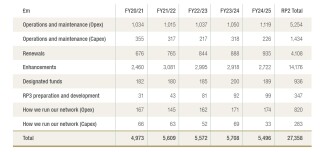Highways England has set out its plans for the next five years, including starting 12 new major roadbuilding projects.
As part of his budget statement, the chancellor announced a £27.4bn budget for investment in England’s strategic road network between 2020 and 2025. The publication of the government’s second road investment strategy (RIS2) set out more detail.
Highways England has now published its own strategic business plan for RIS2, setting out how it plans to spend that £27.4bn.
The marquee construction elements are the £2bn Stonehenge tunnel to upgrade the A303 (Amesbury to Berwick Down) and the £7bn Lower Thames Crossing. Work on the Stonehenge tunnel is earmarked to start in summer 2022; construction of the Lower Thames Crossing is down to start in early 2023.
Over the next five years, £14.2bn is planned to be spent building improvements to the network (enhancement schemes); £10.8bn will be spent on running the existing network (operations, maintenance and renewal); £1.1bn will go on Highways England’s own internal running costs; and a further £936m has been allocated for ‘designated funds’ (‘delivering projects… beyond the traditional focus of road investment).
Highways England chief executive Jim O’Sullivan said: “Having the certainty of long-term investment, and a schedule of committed schemes and targets, has helped us move away from managing the SRN as individual pieces of asset, such as tarmac, concrete, bridges and signs. We’ve reached a place where government considers our roads as a fully integrated system, and a part of the broader UK transport network. As a result, we can work better with our stakeholders and with our supply chain as partners. We offer much improved customer service, and we are starting to clear the back log of decades of under investment in the country’s most important transport network.”
As previously announced, Highways England commits to fixing many of the hazards that it previously built into its ‘smart’ motorways. It promises to end the use of dynamic hard shoulder motorways by March 2025, upgrading them to all lane running by converting the hard shoulder into a permanent traffic lane.
The stopped vehicle detection technology that was meant to be a key feature of ‘smart’ motorways but quietly forgotten about will now be introduced to existing all lane running sections by the end of March 2023, the business plan says.
And ‘smart’ motorways are getting more refuge areas for stranded motorists – an additional 10 are to be installed on the M25 before the end of 2020. Highways England will then consider the impact of these for a couple of years and consider adding more elsewhere.
Existing refuge areas that are narrower than the current 15 foot standard will be widened ‘if feasible and appropriate’.

Article courtesy of ‘Construction Index’ August 2020






